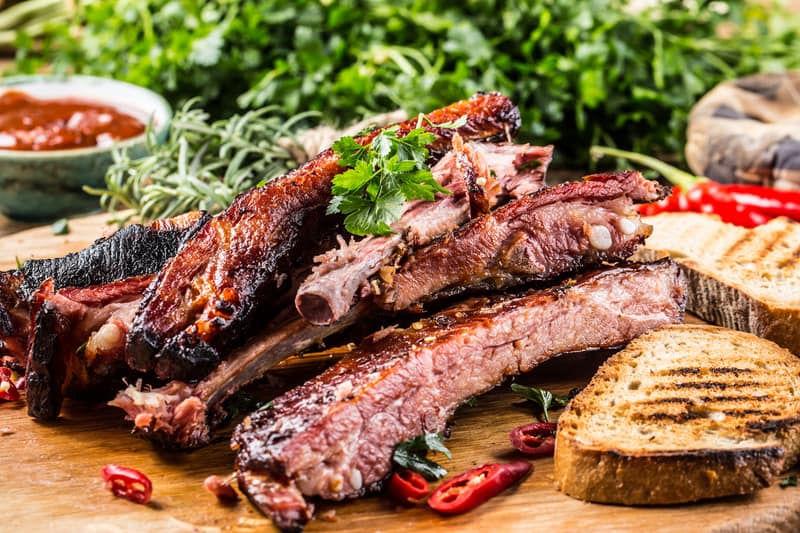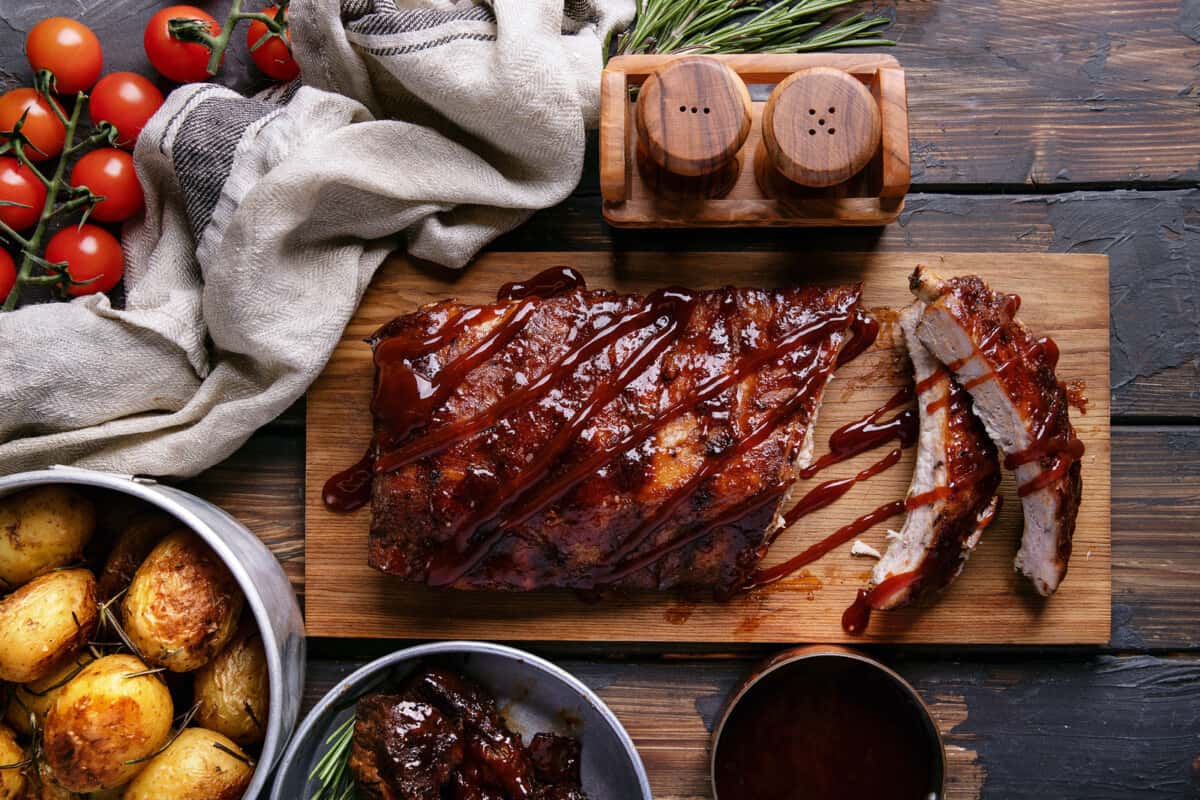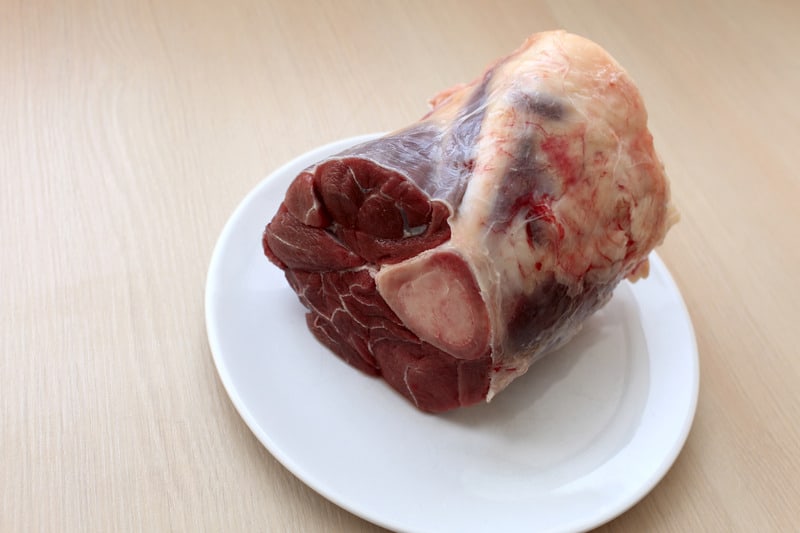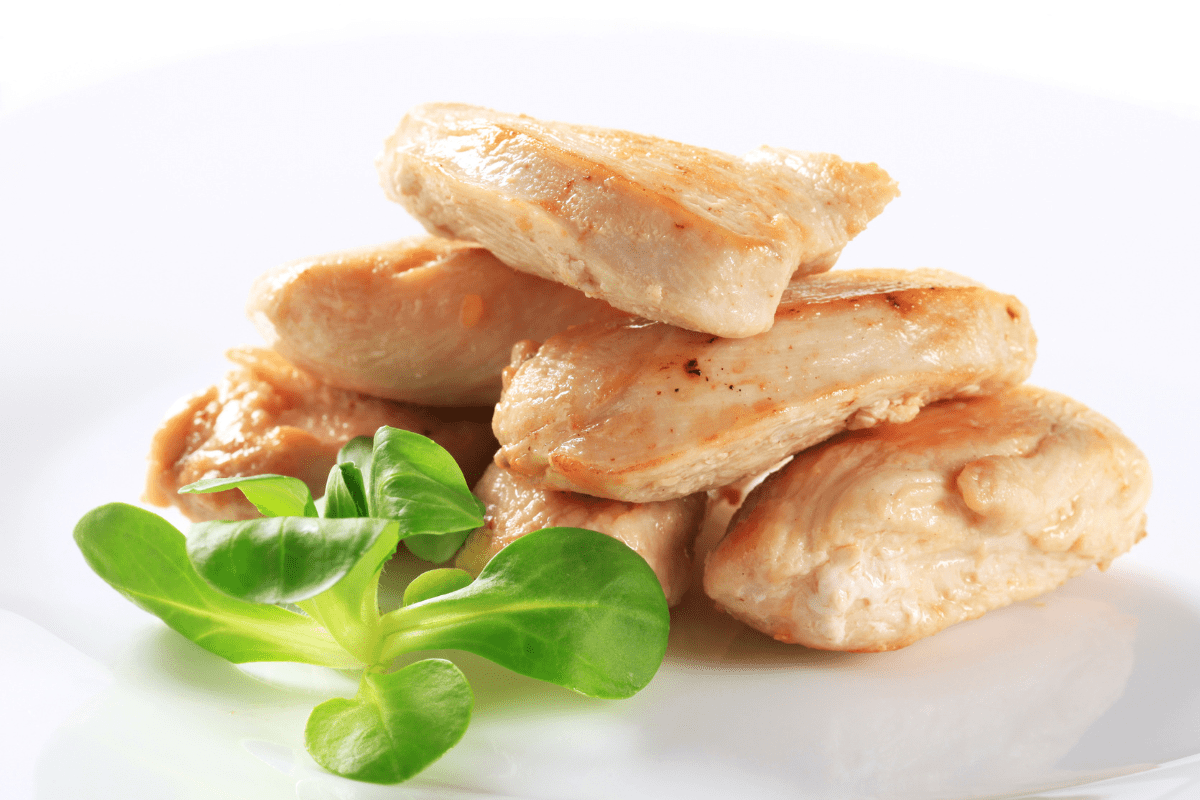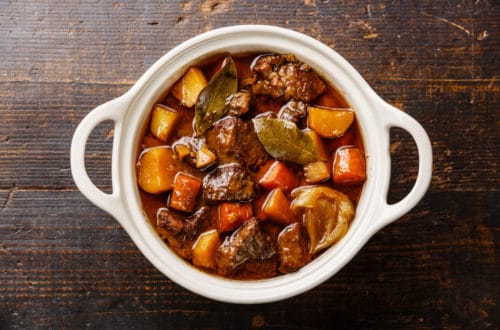What are the different types of pork ribs you can buy? Baby backs, spare ribs, St Louise ribs and pork riblets are the most popular types of pork ribs sold in supermarkets, meat markets and restaurants.
“I know my husband really loves me because he takes me to have ribs. He says I’m the only girl he ever took out who actually ate anything on her plate, as opposed to pushing it around.”
Julia Barr – American Actress
One of the most popular meats eaten today either in restaurants or home BBQ’s, is the tender and tasty barbecue sauce smothered pork ribs – Delicious!
However, there are many varieties of ribs available, and it can sometimes be confusing for people to know which one they want to ask for to have at their next gathering.
Well, we are going to clear things up for you today by explaining the differences between the most commonly available ribs, and how each rib type needs preparing to give you moist and tender ribs every time you cook them.
Let’s start with the most popular ribs that most people are familiar with…….
Baby Back Pork Ribs
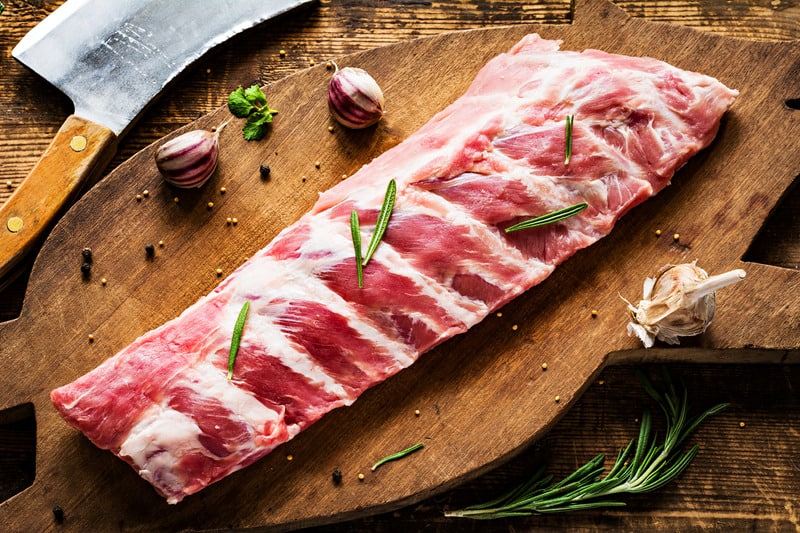
Pork baby back ribs are usually sold as a full rack when purchased raw from a supermarket or meat market. The full rack will contain 10 – 12 ribs and weigh approx 1.5 – 2lbs of which 50% of the weight is bone. The ribs will be about 6″ long at one end of the rack tapering down to about 3″ at the other end.
The baby back ribs are cut from the loin portion of the pig where it meets the back bone. These ribs are more tender than the spare ribs, and so tend to be more expensive.
A full rack of ribs will feed 1 – 2 people.
When served in a restaurant, the rack of baby back ribs will usually be served as a whole or half rack, and smothered with a BBQ sauce. Sometimes a half rack will be served alongside a small steak or chicken breast to create a combo meal.
Preparation Tip!
When buying a rack of ribs from a supermarket, there may be a white membrane still attached to the bone side of the ribs. This is very chewy and needs to be removed prior to seasoning and cooking. If you purchase your ribs from a butcher or meat market, then they will remove this membrane for you.
Cooking Baby Back Pork Ribs
As mentioned, these are the most tender of the different ribs available and so do not need quite as long cooking. The most common methods of cooking are oven roasting or BBQ grilling, however Smoking is also a popular method used by many.
Many people will pre-season their ribs with some kind of seasoning rub and then apply a generous coating of BBQ sauce at intervals throughout the cooking, allowing the sauce to cook and glaze onto the ribs. Other people prefer to just cook the seasoned ribs and allow guests to put their own bbq sauce on at the end of cooking, if they wish to do so.
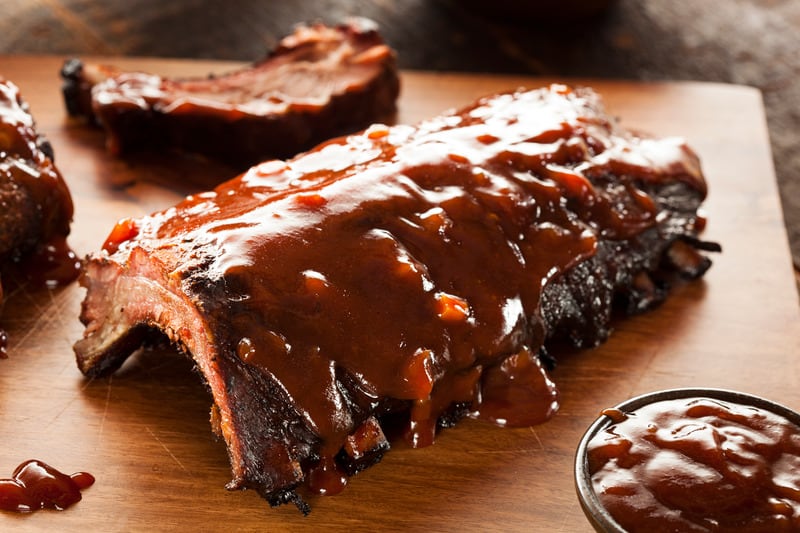
Pork Riblets
True pork riblets are basically a full rack of baby back ribs that have been cut through the centre of the rack to make the ribs half the normal length.
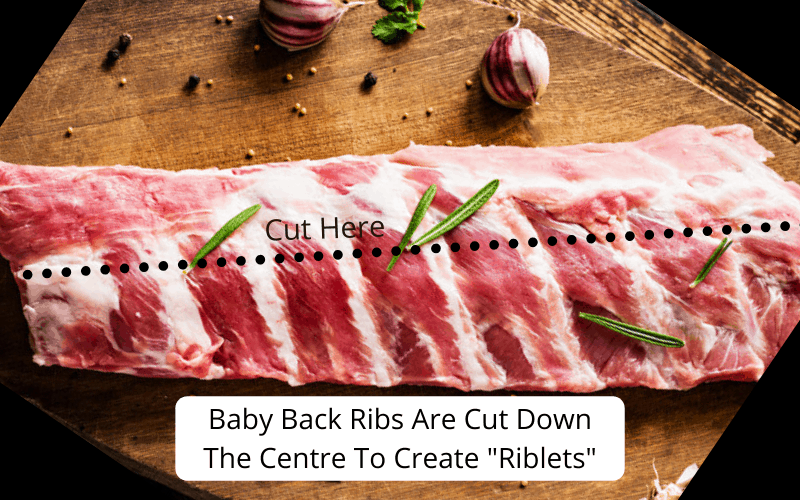
Obviously preparation and cooking will follow the same guide as for the full length baby back ribs.
When are riblets NOT riblets?
Button Ribs
Applebee’s restaurants in North America added “riblets” to their menu and these became very popular. However, they use bones taken from further up the spine (sometimes called button ribs), but do not actually have any ‘rib’ attached, and are more just nubs of bone.
Due to their popularity, some supermarkets have now also started selling these bone nubs and labelling them as ‘riblets’.
Whilst these may be tasty, they are not what is truly known in the meat packing/cutting industry as ‘riblets’
Rib Ends
Rib ends are a bi-product of preparing the St Louis style ribs that we will be discussing further into this article.
Basically the sheet of flat belly ribs has cartilage ‘fingers’ protruding from the ends of the ribs. This cartilage is surrounded by meat and is removed when the ribs are trimmed down to make the St Louis ribs.
This meat and cartilage is usually cut into random pieces and sold as rib ends or riblets.
They are quite awkward to eat as you have to chew around random pieces of cartilage, but they are still tasty and cheaper to buy than the actual ribs.
It is down to personal preference as some people enjoy ‘nagging’ on these, whereas others can think of nothing worse and avoid them at all costs.
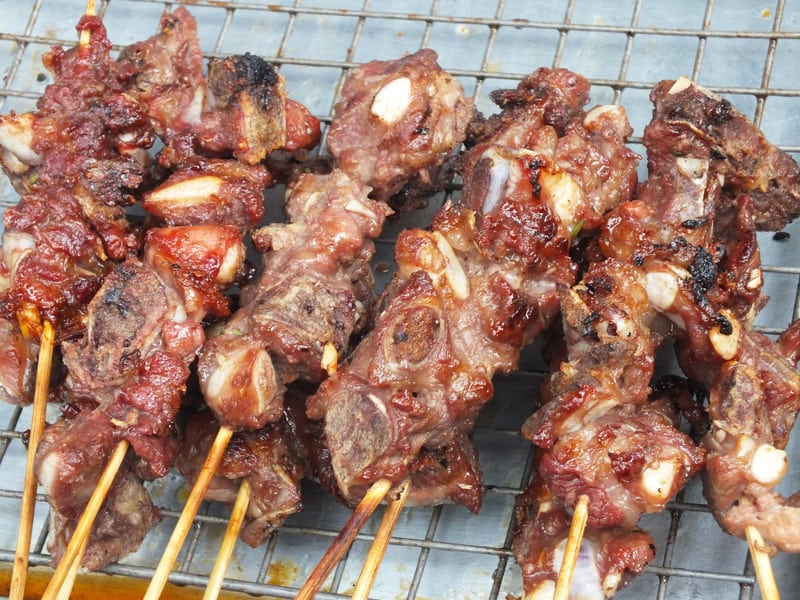
Pork Spare Ribs
The pork spare ribs come from the side / belly of the pig where the bones are removed and the meat used for making bacon.

These ribs are longer and flatter than the baby back ribs and have the cartilage rib ends still attached.
These are usually at least 50 bigger than the baby back ribs and can weigh 3 – 5lbs with 50% bone and cartilage. You should be able to feed 3 people from a rack of these ribs.
The meat on these ribs carries more fat/marbling than the back ribs and so have a great flavor. This meat does tend to be a little tougher though and so needs a little extra care with longer cooking.
Like the back ribs, these ribs also have a covering of membrane that needs to be removed prior to seasoning and cooking.
St Louis Spare Ribs
St Louis spare ribs are the same as the spare ribs above, however they have had the cartilage ribs ends removed to make them a more uniform rectangle shape.
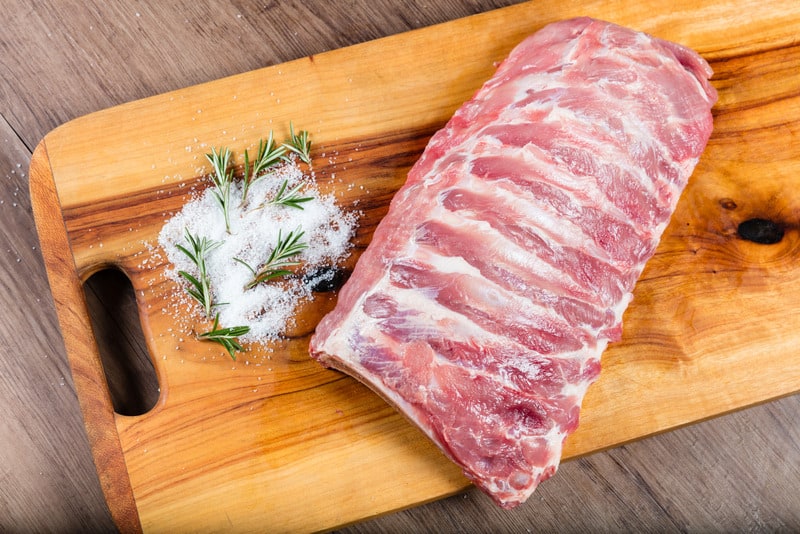
Preparation and cooking of these ribs would be just the same method as you use for doing the untrimmed spare ribs.
Being trimmed down from the spare ribs, they can usually weigh 3 – 4lbs with 50% bone and so would feed 2 – 3 people.
To Boil Or Not To Boil Pork Ribs?
Some cooks prefer to boil the ribs to part cook and tenderise the meat prior to cooking on the grill.
Other cooks feel that boiling the meat can actually toughen the meat, as well as removing all the fat that is required to keep the ribs moist once placed on the grill.
This is truly something that you will need to experiment for yourself to see which method you prefer.
Personally, if I’ve got the time I would rather slow cook the ribs from start to finish, however I have simmered the ribs if I haven’t had the time to do a full slow cook. Providing you don’t boil the ribs for hours, then I feel it can help to speed up the cooking process without being too detrimental.
Belly Pork Ribs (UK Style)
In the United Kingdom, pork belly is sold as a skin on roasting joint or cut into slices / ribs. This cut is simply known as ‘Belly Pork’
A full belly pork on the bone can weigh up to 12lbs (5kg) or more, but can be purchased in smaller portions.
The shoulder end of the belly pork has the longer ribs and is thicker than the hind end which becomes almost boneless and much thinner.
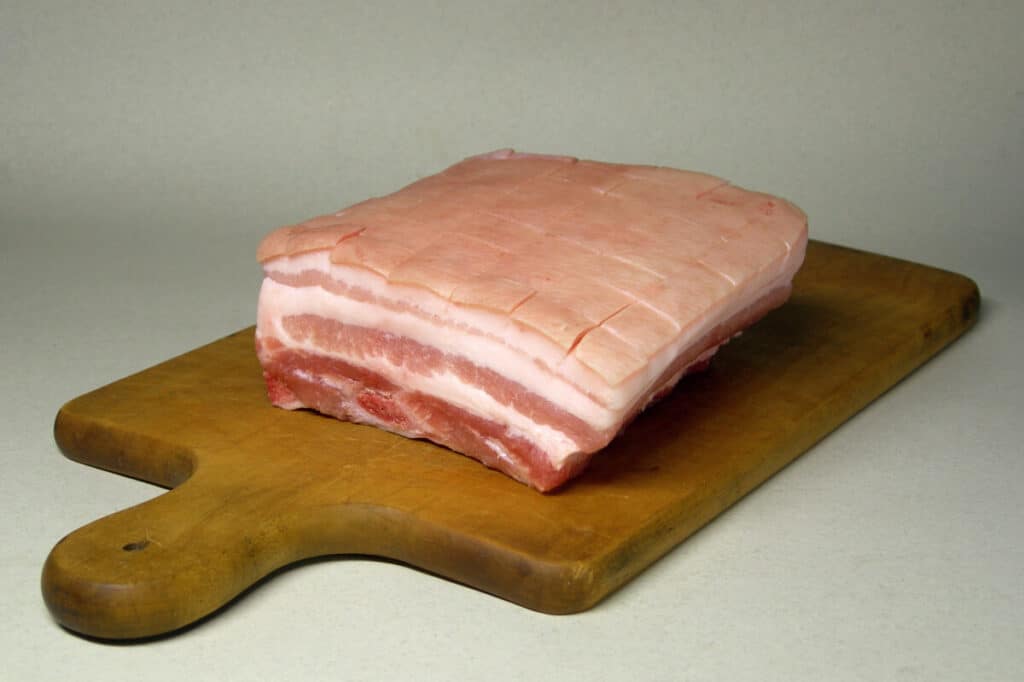
With belly pork slices you get much more meat than on trimmed ribs, and there is usually a lot more fat as well.
Traditionally, the skin will be scored (cut) to allow it to crisp up, and the belly pork slices will either be roasted in the oven or broiled. The crispy skin is known as ‘Crackling’ and in some pubs and shops in the UK is sold as ‘Pork Scratchings’ – a tasty but unhealthy snack!
Due to the high fat content, and the fact that it can be quite chewy meat if not cooked properly, it is usually a cheaper cut most others.
However, cooked properly, the meat is sweet, succulent and tender and is hard to beat for flavor.
If you want to get your juices flowing and mouth watering, just watch how Jamie Oliver prepares a full pork belly – Perfection!
So hopefully this article has helped you decide which pork ribs will best suit you and how to go about preparing and cooking them.
Done right, ribs truly are one of the sweetest and tastiest parts of the pig and it’s no wonder that they are such a hit in restaurants and BBQ’s around the world.
